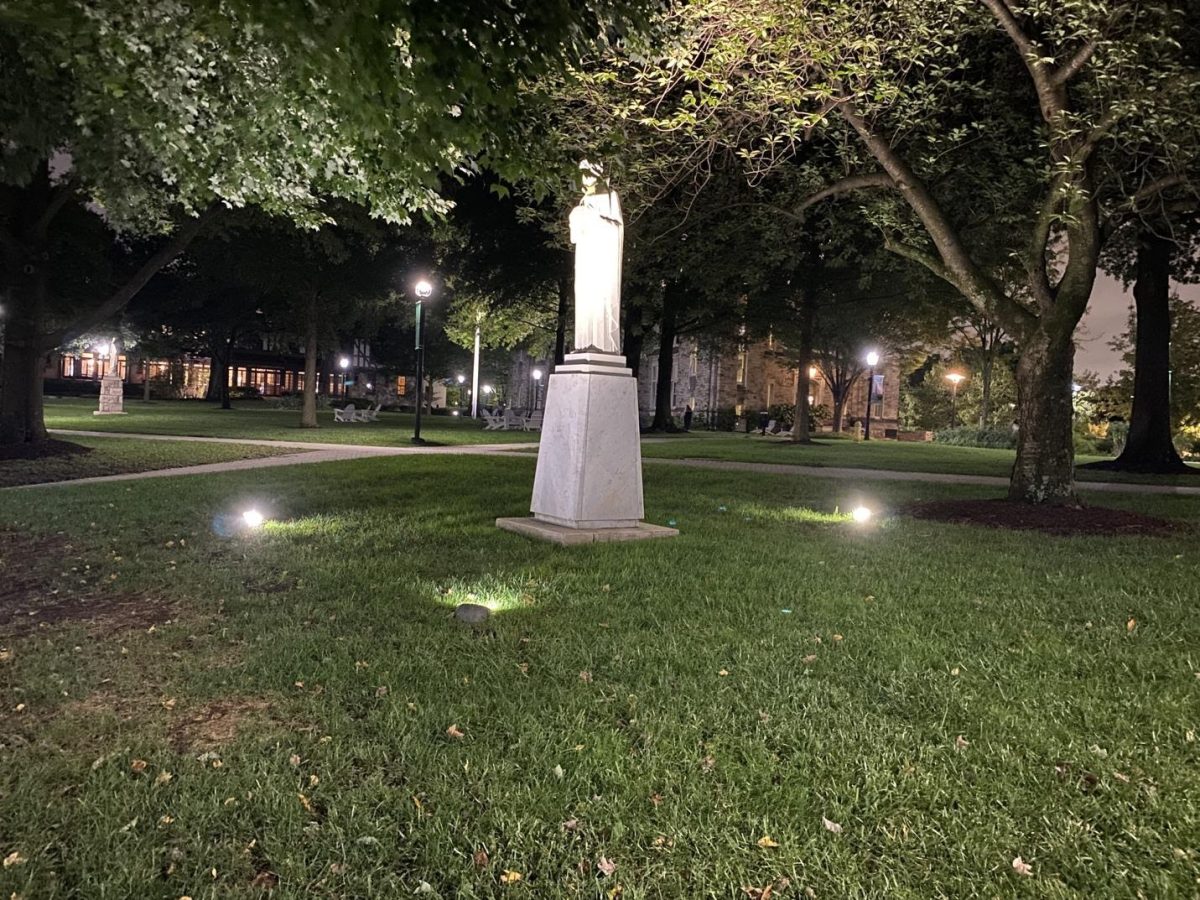During the summer heat, there is one thing that every child looks forward to seeing in the night air: fireflies, lightning bugs, moon flies, or glow flies. However, every year there have been fewer sightings of these bright bugs.
“I have this very distinct memory of looking out into a field full of fireflies,” Alexa Abrahams, a wildlife educator from Irving Nature Center in Owings Mills, MD, said. “I’ve noticed a decline in firefly sightings. It’s hard to wrap your head around these things too sometimes, it seems like a small, almost insignificant, critter but it’s a staple of our childhoods.”
In Jan. 2019, scientists sent out a survey to 350 experts asking them about fireflies. The results showed a significant decline in firefly sightings due to habitat loss, light pollution, and pesticide use. In 2018, scientists started to notice severe declines in firefly populations globally, and in 2020 scientists made a group specifically to address ecological threats to fireflies.
Fireflies utilize bioluminescence to attract others of their species to mate. These special organs glow during specific times depending on their species. There are a vast variety of firefly species in North America alone, some of which come out during the day as opposed to night.
Because fireflies glow to identify each other, light pollution has become a real problem for them.
“For fireflies, the way that we use artificial light is a big problem. The firefly flashing is males looking for mates. When you have houses with lights on at night, it’s hard for them to see those light signals,” said Dr. Chloe Garfinkel, an Assistant Teaching Professor of Biology at Loyola. She has been studying insects for years and showed some concern about the gradual decline in the firefly populations.
“Habitat loss is one of the number one causes of insect declines, and that’s true for fireflies as well. That’s up at the top. Because fireflies are predators, they need a space to feed, those habitats support their food base,” said Garfinkel.
Without a stable place for firefly larvae to feed, most fireflies would die off. Because of housing developments and deforestation, most habitats where fireflies live and reproduce are gone.
Abrahams noted that pesticides are also a big issue.
“When we have pesticide application, it can cause damage to the area that it’s applied, but also to the greater ecosystem. It can cause a problem with biomagnification,” said Abrahams.
Biomagnification is the process through which pesticides collect in the body tissue of a living thing and continue to each level of the food chain.
“These pesticides will then poison each level, possibly poisoning fireflies through their food,” said Abrahams.
Water pollution has also impacted their health as a species. .
“They’ll tell you that pesticides are as targeted as they can be and that’s true… but they can still get into rivers, lakes, and streams which harms wildlife,” said Garfinkel.
There are some species of fireflies where water is an important part of their reproductive cycle. Without clean water, those firefly species would die from the pesticide and herbicide-infused water. While most people don’t plan on poisoning wildlife, it is a consequence of using pesticides and herbicides because it often gets in the water via runoff.
However, it’s not all hopeless when it comes to helping our glowing little friends.
“Dark nights are a good option to cut down on light pollution,” said Garfinkel.
Cutting down light pollution within residential areas during dark nights, with as many lights as possible turned off, would help fireflies find each other. As for deforestation and pesticides, getting involved in the community and spending time educating others on the dangers of deforestation and pesticides is a great starting point.
“Another great way to start is to get in contact with nature, there are many different programs offered at the Irving Nature Center to learn about the environment and get in contact with nature,” said Abrahams.
She urged anyone willing to help in the effort of nature preservation to learn about it, get involved, and see wildlife for themselves.
There are also groups on campus that offer chances to get involved in learning about the environment and promoting environmental justice in the Baltimore area and around Loyola’s campus.
“I think we would notice once they were gone. Whether we would notice during the process depends on if there are active sampling efforts,” said Garfinkel.
Abrahams agreed. “It’s a nostalgia factor, but you must stop thinking about it and wonder if you are really seeing these things. You really must pay attention, that’s a part of science. You must or else you won’t notice until it’s gone,” she said.







































































































